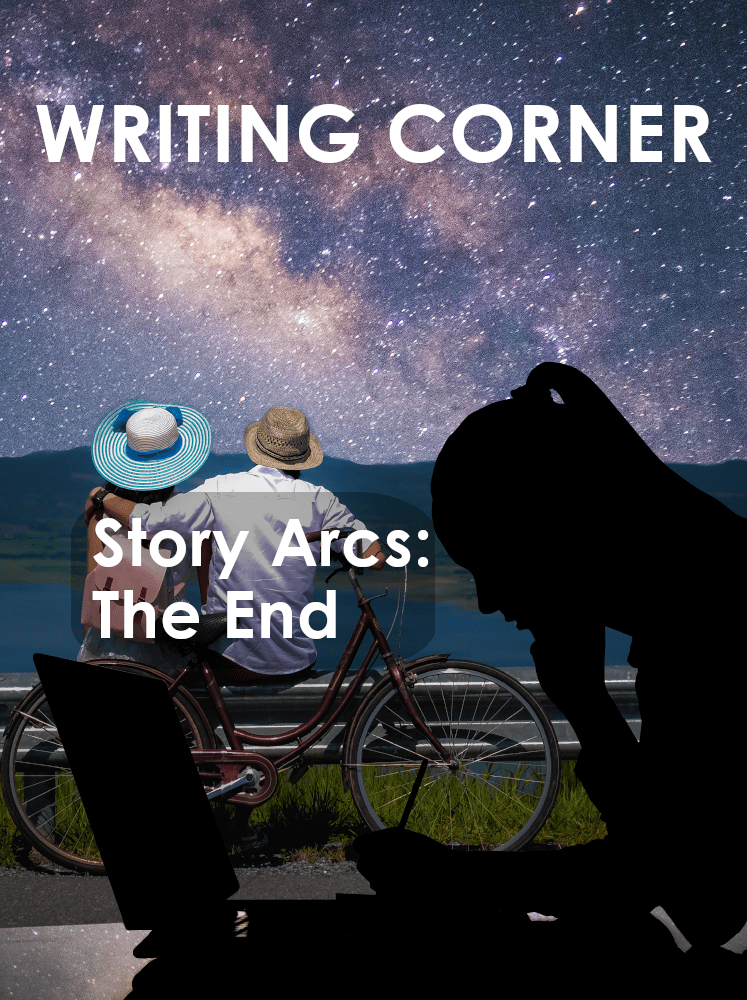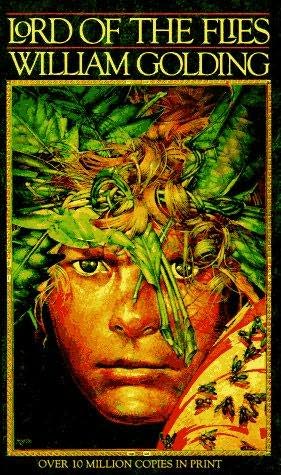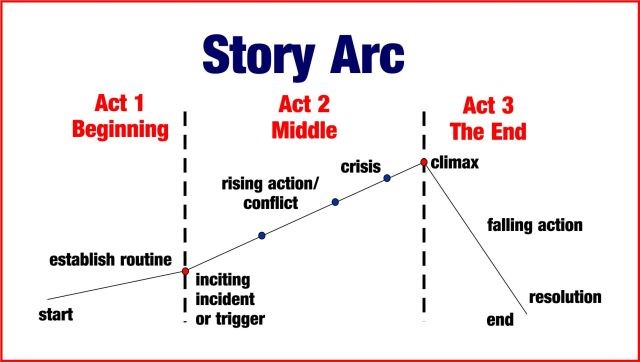
Story Arcs: The End
In the previous Writing Corner post, we looked at the ending part of the story arc. This is usually the shortest and least important part of the story arc. However, it is still important since this is the last thing the reader will read. Last week, I mentioned the idea of pay-off. This means that the reader is investing their time in reading your story, and they are expecting a satisfying story. This is where we finish delivering that.

Aspects of the Story Arc End
1. Falling Tension
The highest tension in a story is the climax, which is the dividing point between the middle and the end part of the story. So, everything in the end part is going to be less tension than that. This is a place to wrap up all your story lines and conflicts, not to start any new ones.
2. Short in Length
As I said above, the end is the shortest part of the story. Sometimes this can be only a few pages or even a few paragraphs if it’s a short story. There are times when we might not have an end part at all. In some short stories, the climax comes right at the very end of the story, usually if it’s a cliff-hanger or twist ending (see my post on Story Endings for more).
3. Returning to Normal
The end of a story often goes back to where the story first started. This is called closing by return. Things are back to where they were at the beginning but everything has changed now (hopefully for the better). The main character comes home from their journey or things go back to normal after the craziness of the story and climax.


Examples of the Story Arc End
The Matrix (movie)
The climax of this movie is when Neo is killed but then comes back to live and kills Agent Smith and they finally kill the robots that are tearing their ship apart in the real world.
The ending is only about two minutes long after that. We see Neo back in the matrix on a normal street but everything is different now. He tells the machines running the matrix that things are going to change. Then he literally flies away.
This is a dramatic way to end the movie and to show that big things are in the future. This is also setting up the sequels, so it gets the audience excited for what will come next.
A Wrinkle in Time, by Madeleine L’Engle
The climax of the story is when Meg goes back to Camazotz and rescues Charles Wallace from IT, the evil mind controlling him.
The ending part of the story arc is very short in this as well, only about 2-3 pages. They are pulled back to Earth and the family is reunited. The three women, Mrs. Whatsit, Mrs. Who and Mrs. Which leave them. The story ends at the house where it began, although now their father is there too.
Lord of the Flies, by William golding
The climax of this story comes when Jack and his friends are hunting Ralph and the others, and they suddenly come out onto the beach to find a naval officer there.
The end part of the book is only a few pages as well and it goes back to the beginning of the story as well by bringing them back to the beach and also back in contact with civilization. It is not a happy ending but as happy an ending as the book could have had.



Bonus: The Lord of the Rings
Since all of these examples have had very short end parts to their story arcs, I will include the Lord of the Rings as an example of a very long ending part.
The climax of this is when the Ring is destroyed, but the story goes on for 6 chapters after that, with several other mini-climaxes (although none as high tension as the main one). This is because the story is so complicated and has so many sub-plots it would not be satisfying to end without wrapping up all the story threads.
Like the others, this story ends back at Bag End, the house where the Lord of the Rings (and the Hobbit) both started. It even ends with the line, “‘Well, I’m back,’ he said.”


Things to Consider When Ending Your Story
In a lot of ways, writing the end of the story arc is not as complicated as writing the middle. However, there are a few things you should think about when writing the end of your story.
1. Wrap up all conflicts and story threads
This is not hard to do in a short story but can be more difficult with a longer story, like a novel. It is very easy to forget about minor sub-plots that you introduce in the middle of the story.
The best way, I find, to make sure everything is resolved is to write out all your story threads when you are editing your story. I track them all in a spreadsheet scene by scene to make sure they are being developed properly, to see if they all necessary to the story, and also to make sure they have all be concluded by the end of the story.
2. Make sure it doesn’t go on too long
With the exception of The Lord of the Rings, which is 480,000 words long, all of the story examples I gave above end very quickly after the climax, in just a few pages. Since the high point of the story is the climax, it is good to keep as much of that energy for the ending. If you write three more chapters after the climax, the reader will probably get bored.
3. You can set up a sequel but make sure the story has a satisfying ending
It is fine to write a sequel to a story where the story will continue. However, it is also important to remember that the reader is reading this book, not necessarily all of them together. I have read books that just ended almost mid-scene, with the expectation that the story would continue in the next book. That is okay if you writing a serial story, such as in a weekly blog, but the reader still needs to feel like they have finished something.

Now it’s your turn
- Think of a book or movie you have read/watched lately. How long does it continue after the climax? Does it wrap up all the story lines or do they forget about some? Is the ending satisfying or not? Why or why not?
- Think of a story you’ve written. Find the climax and look at the story after it. Does it wrap up everything in the story. What would make it a more satisfying ending for the reader?
If you have any questions about writing or other topics you want me to talk about in Writing Corner, just send me an email at greenwalledtreehouse@gmail.com.


I’m studying this wih a jeweler’s eye. Your teacher is showing again. You’re so good David. 🙂
LikeLiked by 2 people
Thanks so much. I really appreciate your encouragement.
LikeLiked by 1 person
You rock David. Look at what you’ve created to help kids find their voice. It’s truly admirable.
LikeLiked by 1 person